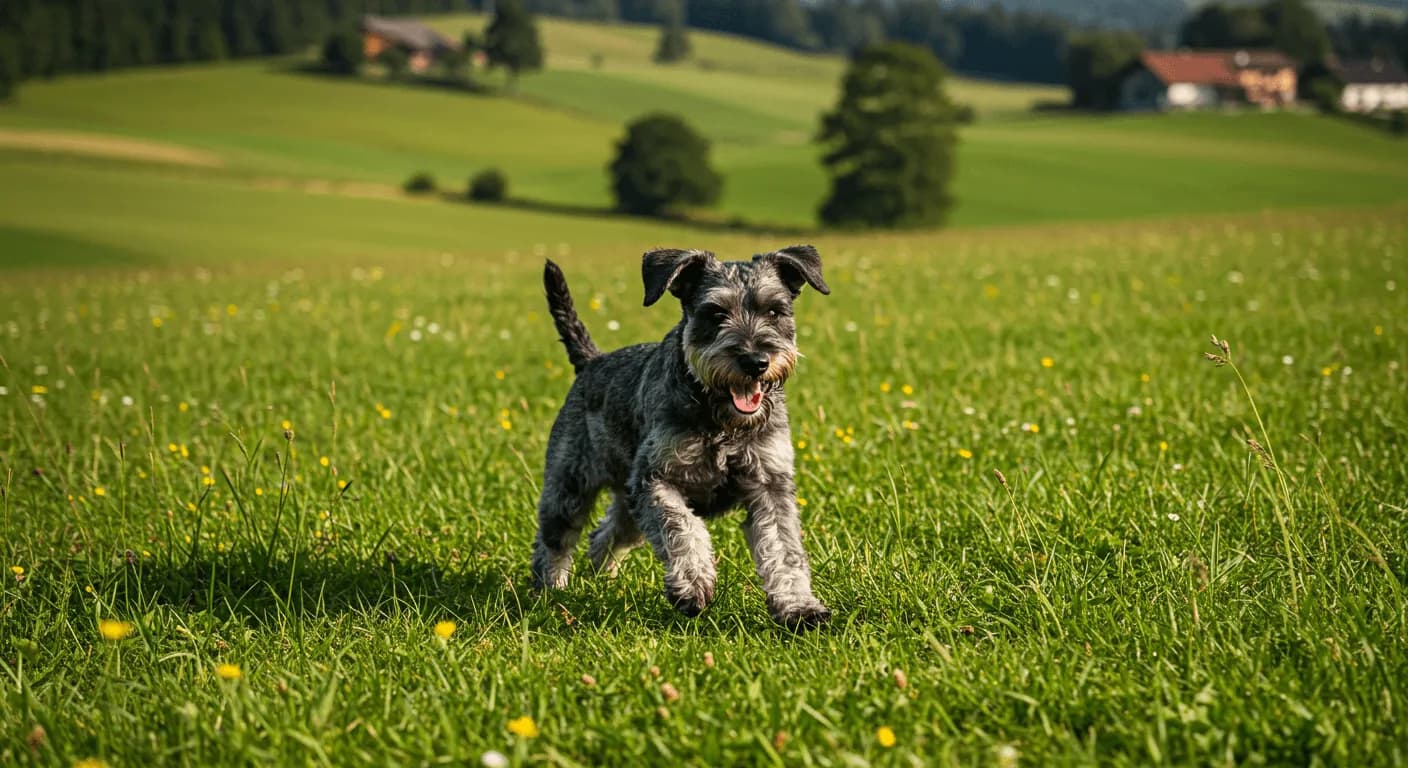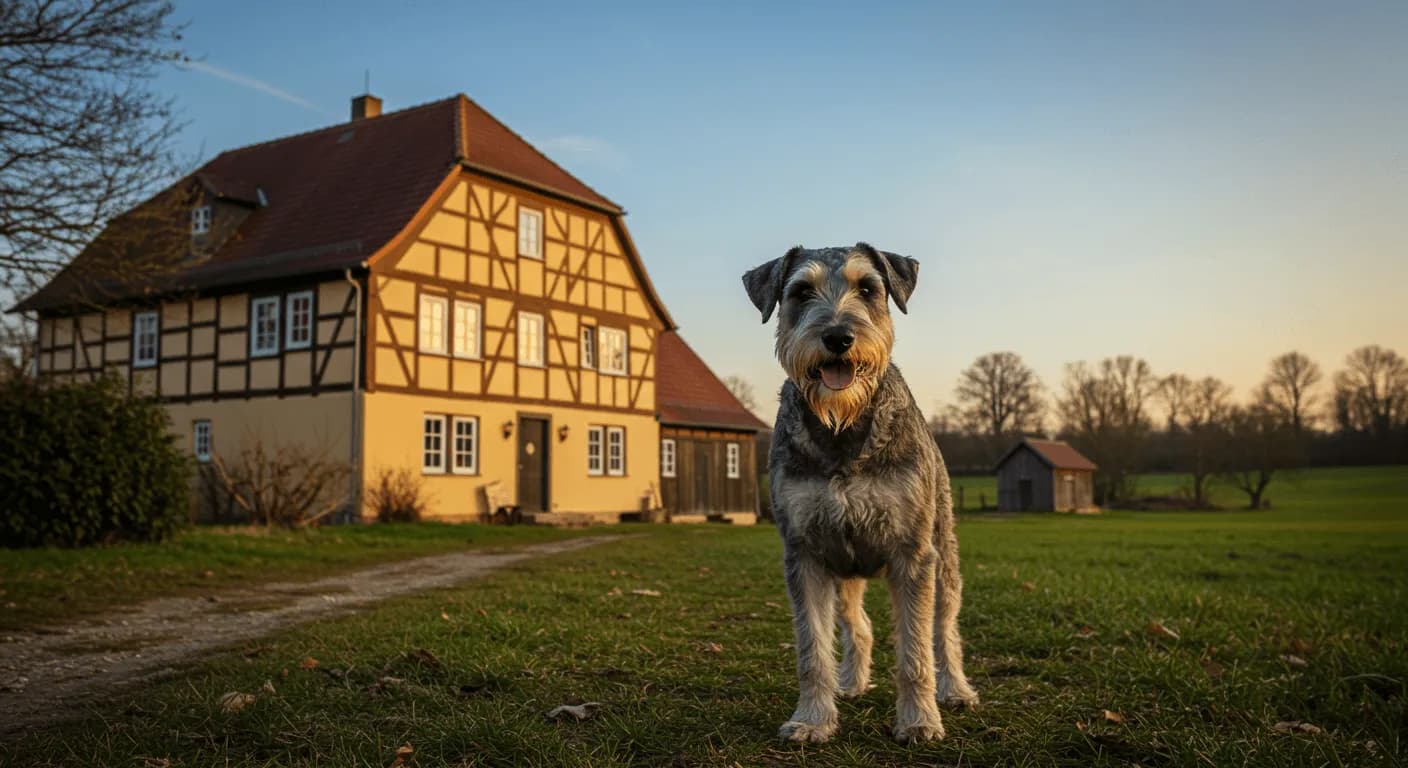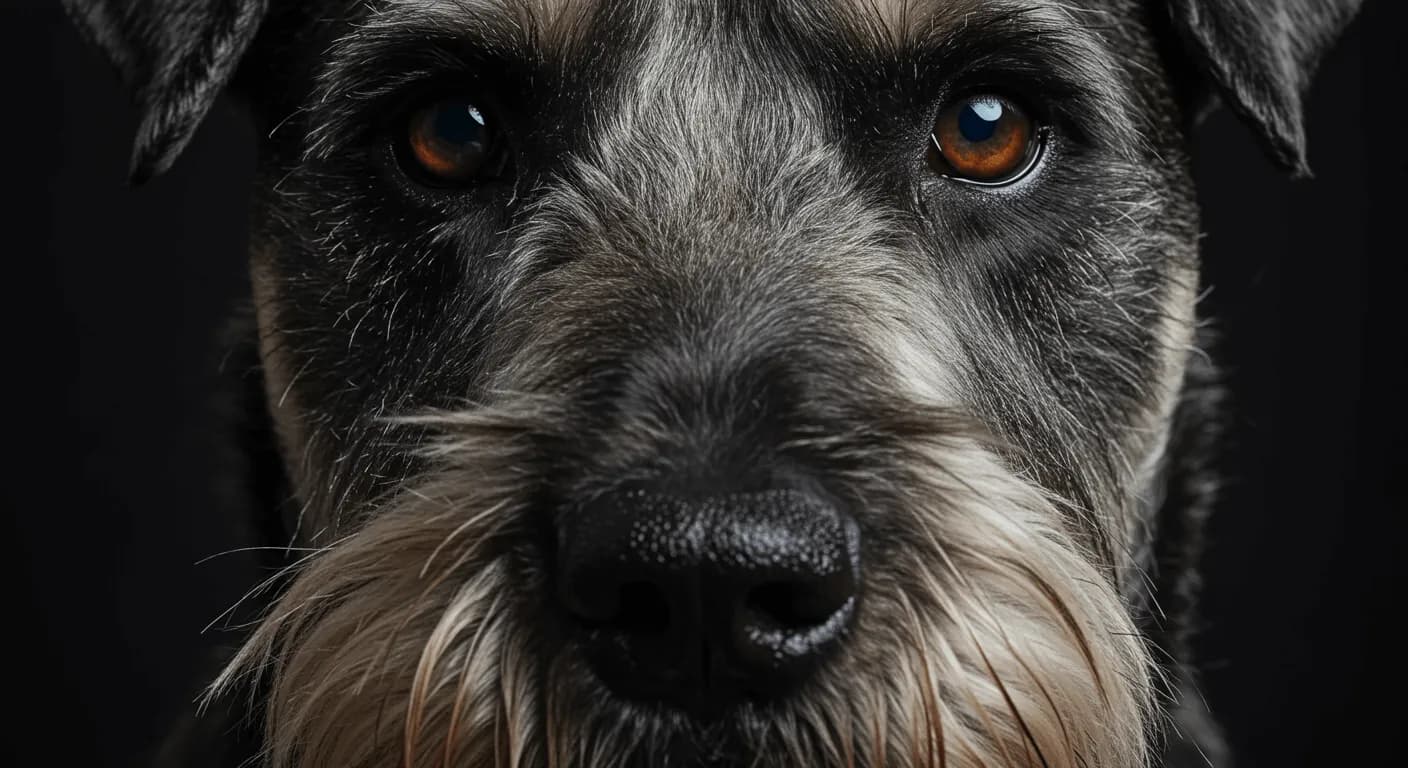The Giant Schnauzer is a bold, intelligent, and hardworking breed that has piqued the interest of dog enthusiasts, historians, and working dog professionals alike. Known for its powerful frame, alert gaze, and classic schnauzer beard, this breed stands as a living testament to Germany’s agricultural and utilitarian past. In this in-depth historical guide, we will explore the Giant Schnauzer history and origin, including when the Giant Schnauzer was first bred, where it came from, and what it was originally developed for. We will also analyze the breed’s etymology, bloodlines, and legacy through time, from its Germanic roots to its modern-day utility and popularity.
The Origins of the Giant Schnauzer
The Giant Schnauzer originated in Germany in the 17th century and was developed in the region of Bavaria and Württemberg, nestled among the foothills of the Alps. It was there that farmers, merchants, and cattle drovers needed a rugged, versatile dog that could assist with farm work and herd livestock over rough terrain. Early breeders set out to create a larger and more robust version of the Standard Schnauzer, a dog already popular for its keen intelligence and industrious temperament.
Earliest Known Ancestors and Genetic Lineage
The genetic lineage of the Giant Schnauzer likely includes a blend of several established breeds. Historians and breed experts suggest that the Giant Schnauzer was developed using crossbreeding techniques involving the following dogs:
- Standard Schnauzer
- Great Dane
- Bouvier des Flandres
- German Pinscher
These breeds contributed to the Giant Schnauzer’s size, strength, working ability, and coat type. The emphasis was on creating a powerful working dog with a dense, weather-resistant coat and advanced herding and guarding instincts.
Prehistoric Environmental and Agricultural Context
In the mountainous terrain and rolling farmland of southern Germany, a dog needed to be rugged, enduring, and adaptable. Bavaria’s climate featured cold winters and warm summers, which influenced the Giant Schnauzer’s development into a breed with a thick, wiry coat and high stamina. The environmental conditions directly impacted how the breed evolved and what traits were favored — particularly endurance, toughness, and intelligence.
Where the Giant Schnauzer Came From
Country and Landscape of Origin
If you're wondering what country the Giant Schnauzer came from, the answer is Germany. Specifically, the breed was first developed in Bavaria and Württemberg, rural regions known for their rugged terrain, alpine pastures, and agricultural economy. The breed thrived in this environment, becoming an indispensable asset to farmers and merchants.
Cultural Significance
In German culture, dogs have always played a vital role in daily life—guarding, herding, and protecting. The Giant Schnauzer embodied these roles with excellence and was regarded as an elite working dog. Its diligence and loyalty were especially praised by cattle drovers and butchers who relied on their dogs for livestock transport and property protection.

Environmental Influences
The unpredictable Bavarian weather, ranging from snow-covered pastures to rain-slick roads, required a dog with resilience and a coat that could withstand moisture and cold. The Giant Schnauzer’s dense, bristly coat evolved as a direct response to these conditions, serving both to protect and insulate.
Historical Purpose and Function
What the Giant Schnauzer Was Bred For
The early purpose of the Giant Schnauzer was primarily as a working dog on farms. Its original jobs included:
- Driving cattle from farm to market
- Guarding farmyards and families
- Pulling carts for merchants and butchers
- Protecting livestock from predators
This multipurpose utility made the Giant Schnauzer an integral part of many farms and rural businesses. Over time, its intelligence and keen sense of protection made it an ideal candidate for various modern roles.
Evolution of Function Over Time
During the early 20th century, the breed caught the attention of police and military organizations in Germany. Owing to its seriousness, strong instincts, and trainability, Giant Schnauzers began appearing as police K9s during World War I and gained additional popularity in WWII. They were also used as watchdogs in breweries, and later, as scent detection dogs, search and rescue workers, and service animals.
Naming and Nomenclature
How the Giant Schnauzer Got Its Name
The term "Schnauzer" is derived from the German word “Schnauze,” meaning "snout" or "muzzle," referencing the dog’s distinct facial hair, particularly its iconic mustache and beard. The name "Giant Schnauzer" differentiates it from the smaller Standard and Miniature Schnauzer breeds.
- “Schnauze” = Snout (German)
- "Riesenschnauzer" = Giant Schnauzer (German full name)
Over time, the breed became officially known as the "Riesenschnauzer" in German-speaking countries, and simply the Giant Schnauzer in English-speaking regions.
Linguistic Roots and Cultural Meaning
The beard of the Schnauzer was seen as a symbol of wisdom and masculinity in Germanic culture, lending an air of distinction to the breed. This characteristic was so significant it became central to the dog's nomenclature.
Historical Naming Conventions
Originally referred to simply as a "Munich Schnauzer" due to its popularity in Munich, the breed earned the "Giant" distinction as it grew in stature and was recognized as a separate variant with unique capabilities.

Historical Impact and Legacy
Societal Contributions
Through the centuries, the Giant Schnauzer has played a substantial role in supporting human activities. Whether pulling carts, driving cattle, or patrolling city borders with police forces, its utility cannot be overlooked. The breed’s versatility helped shape it into a modern working dog with applications in industries ranging from agriculture to law enforcement.
Influence on Human Activities
Its capacity for advanced training and firm loyalty has made the Giant Schnauzer a valuable tool for many human endeavors. In the 1900s, Giant Schnauzers were particularly active in German cities as service and protection dogs, helping commercial establishments like breweries and livestock yards. Today, they continue to serve as therapy dogs, service animals for the disabled, and loyal family protectors.
First Known Mentions and Breed Recognition
The first known mentions of the Giant Schnauzer as a distinct breed appear in the mid-to-late 17th century. However, formal recognition took place later:
- Recognized by the German Kennel Club in the early 20th century
- Officially acknowledged by the American Kennel Club (AKC) in 1930
- Featured in European dog shows post World War I
When the Giant Schnauzer Came to America
The Giant Schnauzer arrived in the United States in the 1930s, although it remained a relatively rare breed until the 1960s. Interest grew in the Giant Schnauzer as Americans began appreciating both its noble appearance and practical functions. It gained AKC recognition in 1930 and was placed in the Working Group category.
Key Milestones in Giant Schnauzer History
- 1600s – Initial development in Bavaria using Standard Schnauzers and larger working breeds
- 1800s – Widely used for cattle driving, property guarding, and cart pulling
- Early 1900s – Breed gains recognition in German dog registries
- World War I – Employed by military and police for protection and detection work
- 1930 – Recognized by the American Kennel Club
- Today – Serves in law enforcement, service roles, and as family companions
Fun Facts and Lesser-Known Details
- The Giant Schnauzer is the largest of the three Schnauzer types, often reaching up to 27.5 inches at the shoulder.
- Despite their size, they are remarkably agile — qualities inherited from their herding background.
- Their beard and eyebrows give them a human-like expression, which adds to their charm and intelligence.

Summary of Key Giant Schnauzer Traits
Here are a few traits that summarize what makes this breed unique:
- Intelligent and quick-learning
- Loyal and protective
- Hardy, with a weather-resistant coat
- Bursting with stamina and drive
Unordered List: Types of Work Giant Schnauzers Excel At
- Police K9 operations
- Service animal roles
- Search and rescue missions
- Herding and livestock management
- Home and commercial property guarding
Ordered List: Steps in Developing the Giant Schnauzer
- Identify the desired traits from existing working and herding breeds
- Crossbreed Standard Schnauzers with larger breeds like the Great Dane and Bouvier des Flandres
- Select offspring with size, intelligence, and coat type that matched the desired working profile
- Continue line breeding to standardize the breed's physical and behavioral traits
- Register and promote the breed through clubs, exhibitions, and working trials
From ancient Bavarian hillsides to modern U.S. suburbs, the Giant Schnauzer’s journey is a remarkable example of how humans have shaped canine genetics to create a breed with enduring utility, beauty, and loyalty. Its bloodlines tell a story of determination, adaptation, and excellence—both canine and human.
Conclusion
The story of the Giant Schnauzer is one of purpose, adaptability, and resilience. From its rugged Bavarian roots to its status today as a beloved working companion and family guardian, the breed offers a rich legacy that blends form with function. Its development—carefully crafted by farmers, breeders, and military experts—reflects centuries of evolving human needs, environmental challenges, and cultural significance.
Whether driving cattle in the fields of 17th-century Germany or partnering with law enforcement in modern cities, the Giant Schnauzer has proven time and again its unmatched value as a loyal and intelligent working dog. Understanding the Giant Schnauzer history and origin gives us a greater appreciation of the breed’s strengths, its enduring bloodlines, and its impact on the world of dogs.
As we continue to welcome the Giant Schnauzer into our homes, families, and professional settings, we carry forward a legacy that honors its noble past and secures its place in the future of canine companionship and service.




